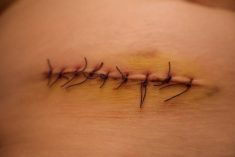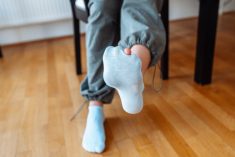Whether due to trauma or degenerative conditions such as osteoarthritis, joint replacement procedures are common options for managing movement limitations and pain. Joint replacement surgeries are among the most common procedures for which I help clients prepare and recover.
The most common joints to replace are knees and hips, often from long-term degeneration. In these procedures, an orthopedic surgeon replaces the degenerated joint structures with an artificial structure, such as titanium. Often, procedures to replace joints bring welcome relief from long-term pain and immobility for the recipient. Typically, joint replacement surgery is considered when an individual’s quality of life and their ability to move is impacted by the severity of their symptoms and the objective degeneration shown in their joints. Imaging (X-rays, MRIs, et cetera) and subjective experiences do not always align. Someone can have quite severe symptoms in a joint and not show much at all on imaging, and vice versa.
It’s important to consider all options leading toward replacing a joint. Even if you’re waiting to be referred for surgery, pursuing conservative options such as physical therapy and manual therapies to manage and maintain your mobility and quality of life can be an important part of the long-term preparation plan.
Read Also

Gentle treatments for pain in the neck
Heading toward year-end, people unknowingly tense up against the cold and busyness, causing neck pain that can often be treated with appropriate support and gentle mobility, athletic therapist Kathlyn Hossack says.
The most successful patients do some “pre-hab” before their procedures to prepare their bodies to walk away more readily from the surgery. This often includes general strengthening and mobility maintenance of the surrounding areas.
Keep moving
Except in cases where trauma doesn’t allow preparation or ongoing mobility practices before surgery, continuing to move, in as many ways as possible, is always my No. 1 recommendation. Even when there is some discomfort or limitation to movement, movement stimulates lubrication of joint surfaces, improves circulation and helps to minimize inflammation systemically. The concept of “use it or lose it” applies to our mobility.
If weight-bearing or impact-based movements become too uncomfortable, then finding lower impact ways to move is imperative. This could include aquafit classes or swimming, where impact on joint surfaces is largely minimized and the soft tissues are still engaged in resistance training. Gentle yoga practices are also a very helpful way to keep the whole-body movement and adjust or alter as needed to avoid uncomfortable positions. Many yoga instructors offer chair yoga for those who find standing for long periods untenable. Searching up “chair yoga” or “chair mobility” on Google or YouTube should connect you to many free classes to try out from the comfort of home.
Movement in general will support maintenance of strength in the area that may be replaced, which means the post-operation rehabilitation will be much more efficient. Joint replacement surgery often is a low-complication procedure, though rehabilitation is very important to ensure successful return to quality of life and mobility with your new joints.
Seek professional guidance
Your local physiotherapist, athletic therapist, kinesiologist, massage therapist, chiropractor or acupuncturist should have some wonderful recommendations and strategies to keep you feeling capable of moving and minimizing discomfort. Your regular health care practitioner will likely have some recommendations as to who to see if you do not already have some connections to allied health care professionals like the ones listed above.
In my next article I’ll write about general guidance on recovering from a joint replacement procedure.















